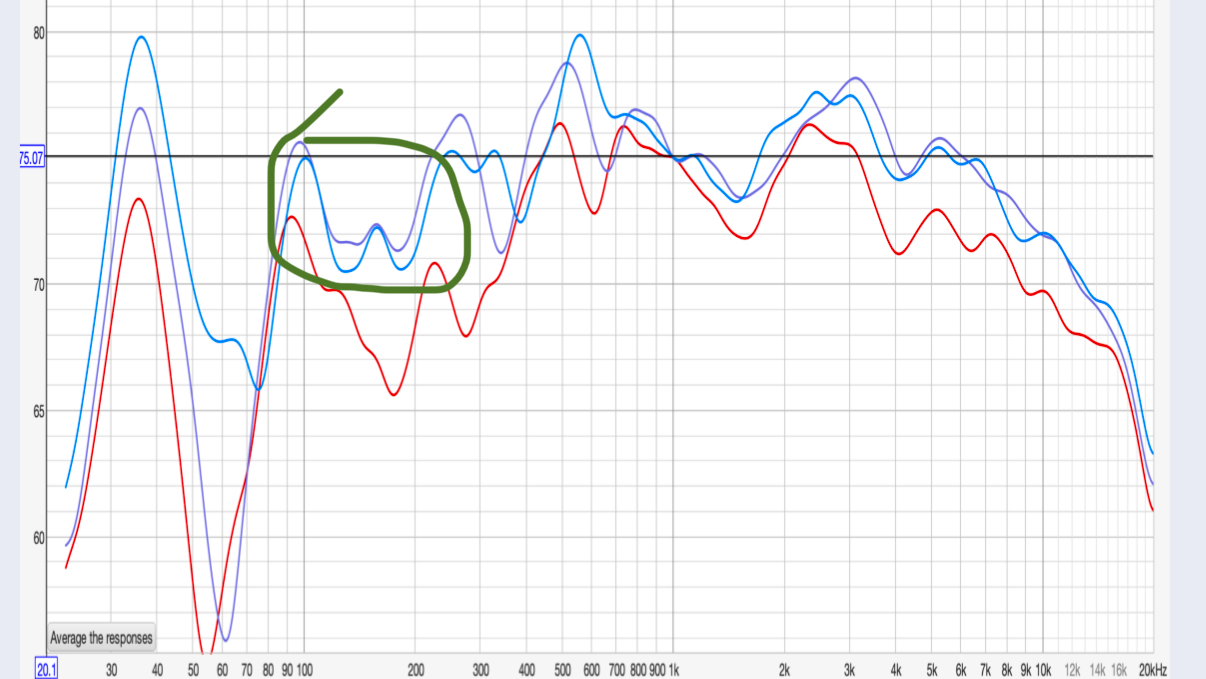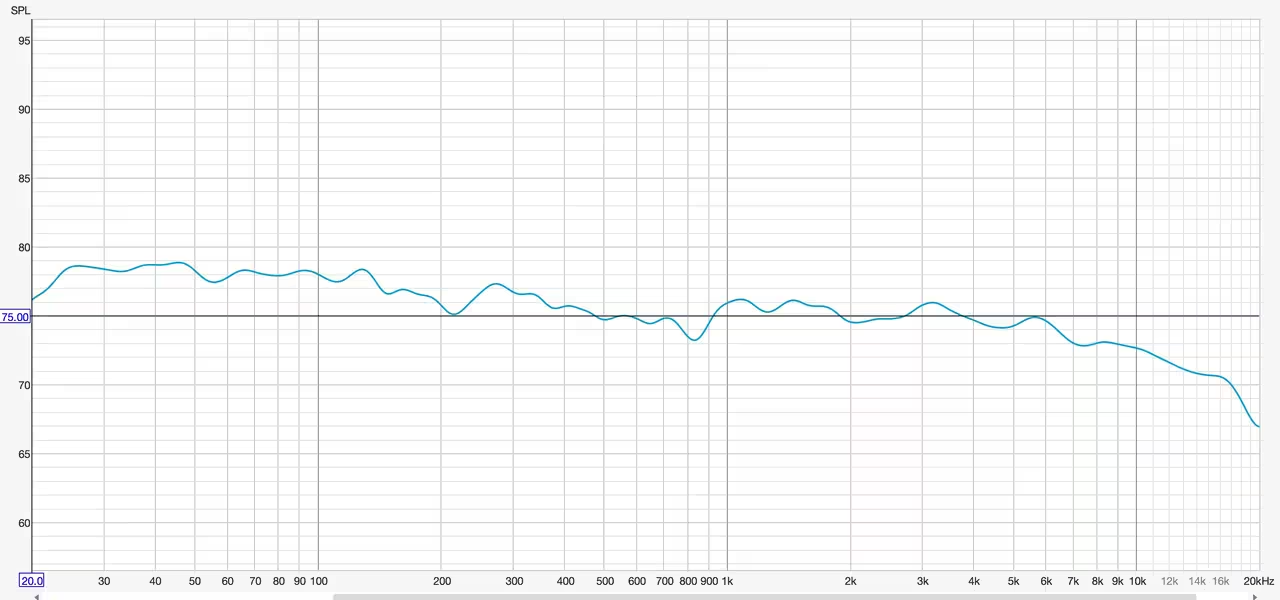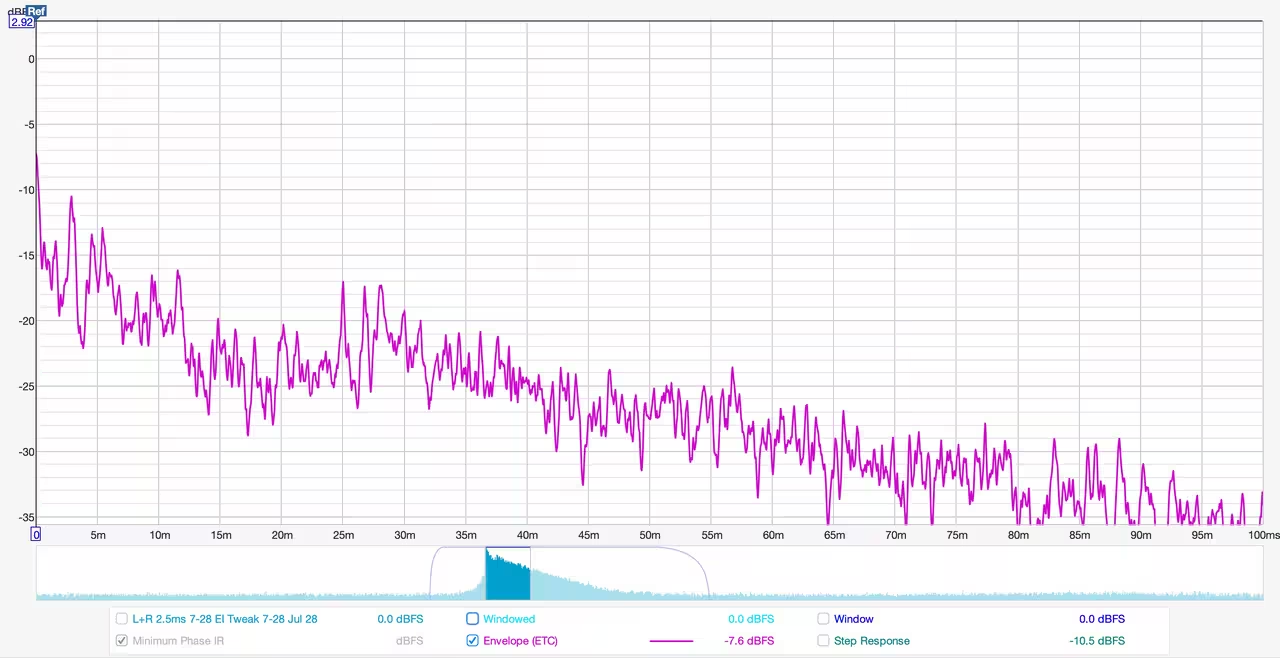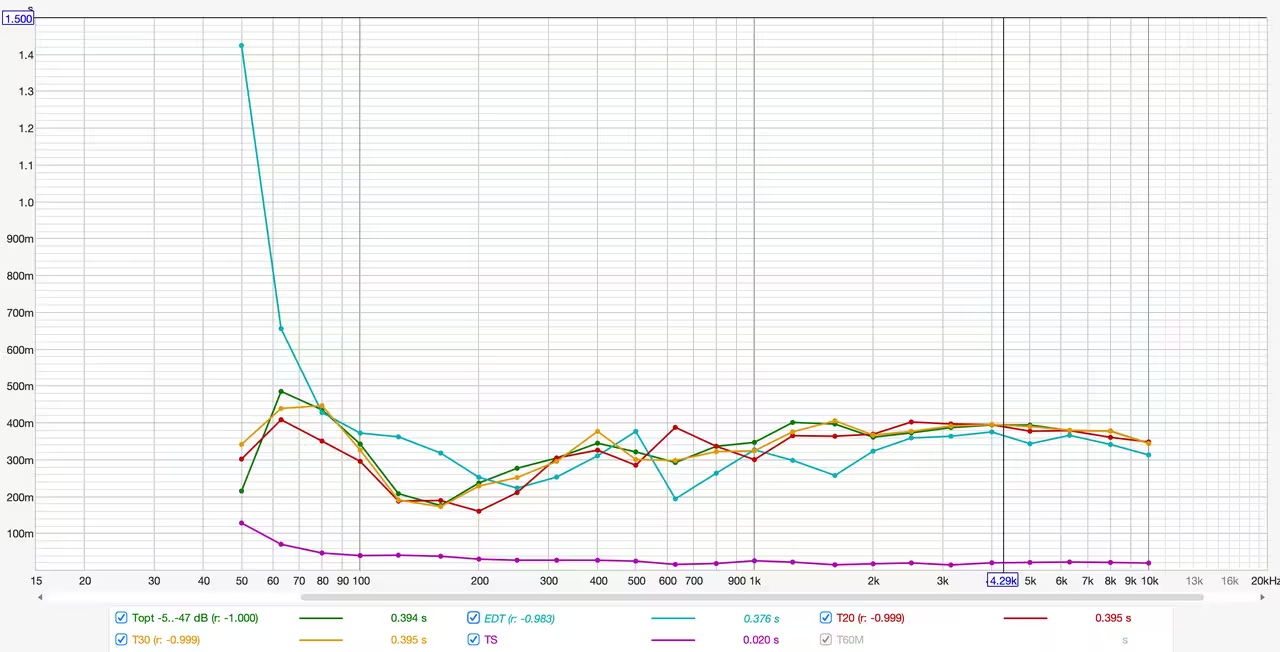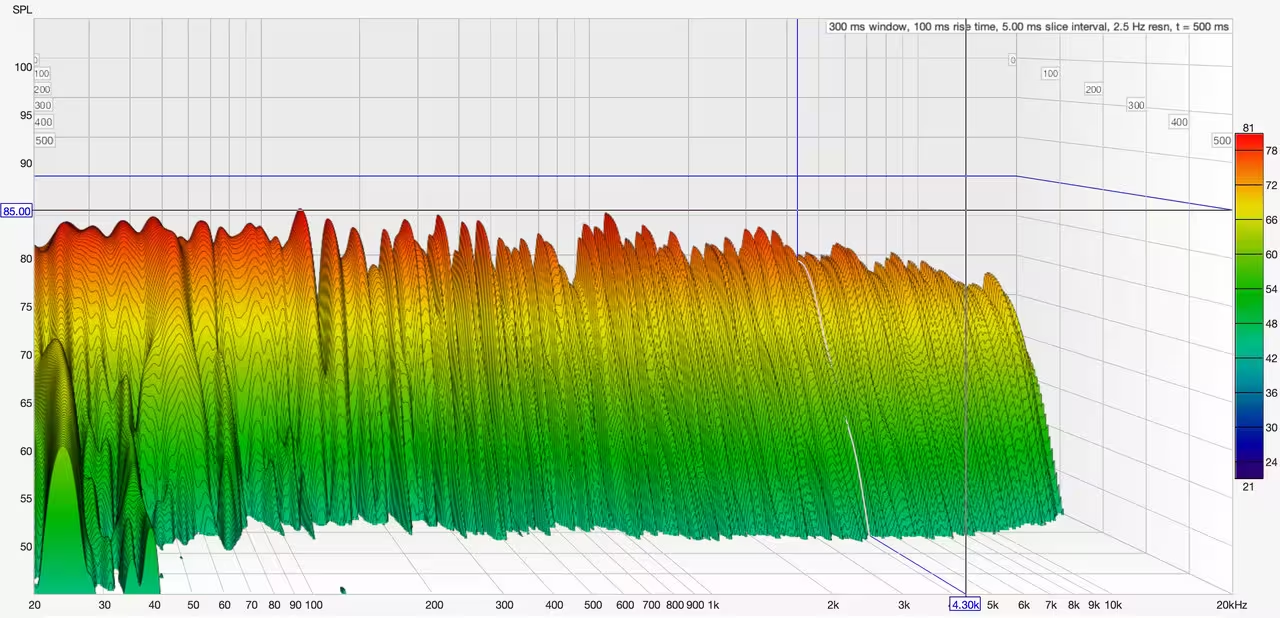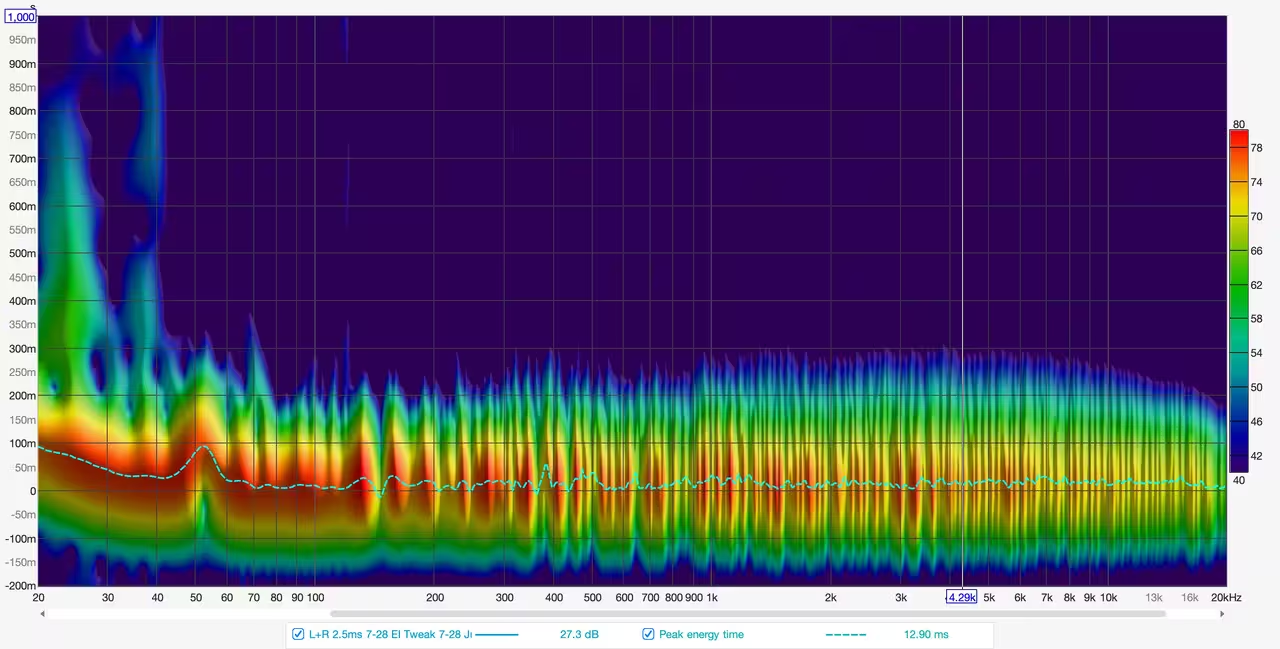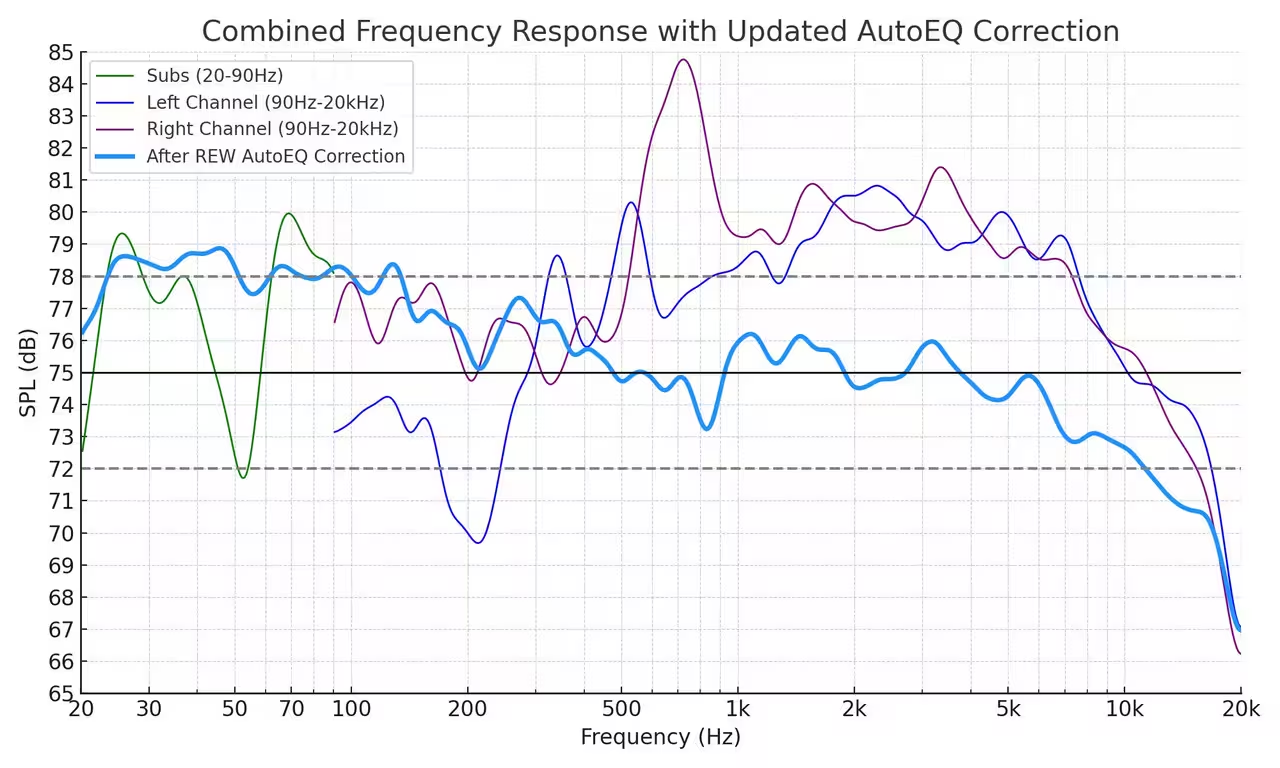@bugredmachine, I had computer problems and have only just resolved the issue. You have a lot of nice kit there and I had a look at your complaint about the 100Hz problem stubbornly remaining. I also noticed your REL subs.
REL unfortunately only provides 0-180 phase flip so you are limited in your ability to dial them in. It appears obvious to me that a different phase setting is required and that is only achievable with a sub that has variable phase adjustment.
My advice, and I'm sure you're not going to like it, is to get an additional sub that has variable phase. There are many on the market and if you do go for this then it should be a sealed box, not ported or with a passive radiator. You've seen me mention the little SVS SB1000 Pro. This is fun to use because you can dial it in from your listening position. It will allow you to flatten the 100Hz peak and provide a smoother response. Be prepared to move one of the REL subs if necessary. I do not get kickbacks from SVS ![]()
You have a lot of energy higher up that could be tamed with a ceiling cloud. The beauty of the cloud is it does not get in the way and it deals with the worst reflections, those from above. As I'm sure you know, the further the absorption is away from the wall (ceiling) behind it the lower in frequency it absorbs so you can by adjusting that distance fine tune it while watching the results on the frequency graph. I assume you are making measurements using REW, if so call up the Waterfall plot (cumulative spectral decay) for info on Rt60 which would be about 300ms. A smooth decay is more important than absolutes.



